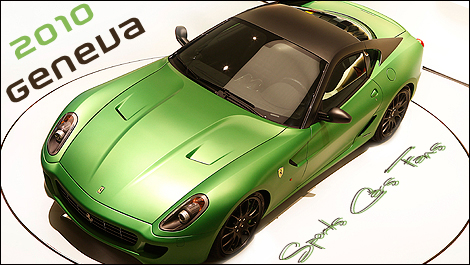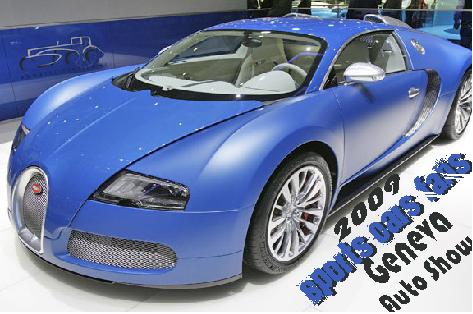Review: 2009 BMW 750i

The BMW 7 Series and the Mercedes-Benz S-class are two vehicles utterly defined by their birthplace. Each was spawned in Southern Germany, where massive stretches of autobahn honed their ability to cover boundless distances at high velocities, cosseting occupants in Teutonic luxury. But they're decidedly different beasts. In spite of their similarities, the two brands have always had distinct personalities. BMW followed its tag-line of the "Ultimate Driving Machine," while Mercedes stuck to its more sober image, focusing on its "Best in German engineering" meme.
As so often happens, automakers feel compelled to grow and expand beyond traditional audiences, and at times, the result is a diluted product that strays from its roots. When everyone is attempting to cater to the broadest possible audience, overlap is inevitable and distinctions begin to disappear. Look no further than the American mid-size sedan segment, or in this case, the last generation 7-series. So for 2009, BMW sought to re-focus its uber-sedan on what it does best. Read on to find out if BMW succeeded or if the new 7 suffers from further dilution.
It seems fitting that BMW's flagship would lead the way in introducing new design directions for the brand. The previous fourth-generation model marked the debut of the controversial Chris Bangle era. The Bangle 7 may not have received much in the way of critical acclaim for its aesthetics, but it was the best-selling generation to date, and its distinct styling cues have found their way into many other vehicles. Even with a mid-cycle refresh that significantly improved its looks, the fourth-gen. model still suffered from a top-heavy appearance that diverged from the lower, sleeker looks of earlier editions. This latest edition marks a return to form for BMW.
While Bangle remained the titular head of BMW design during the course of the 7 Series development, his successor, Adrian van Hooydonk, led the team that created this new version. The result is a sedan with virtually the same dimensions as the last 7, but with an additional three-inches of wheelbase. Despite the stretch in the middle, the new car looks significantly smaller thanks to a slopping nose and contoured flanks that lend a tauter, more muscular appearance.



Our first experience with the new 7 Series involved time in an extended wheelbase, sport pack-equipped 750Li. This time, our tester is a standard wheelbase 750i. Currently, the only engine available in the U.S. market 7-series is the 4.4-liter twin-turbo V8 that debuted last year in the X6. However, just before our test, BMW announced a new V12-powered 760 that will find its way to the States later this year, while buyers in other parts of the world have a choice of gas or diesel mills.
With its 400 hp and 450 lb-ft of torque at just 1,800 rpm, the turbo V8 is an ideal power-plant for a big luxury sedan. It's only available with a ZF six-speed automatic transmission, as for the overwhelming majority of people who choose a 7 as their preferred conveyance, a manually-operated clutch wouldn't find favor. But that's not to say the 750i isn't suited to fast driving. On the contrary, even without the sport package, the 7 feels surprisingly nimble for a 4,500 pound vehicle. To the left of the shift lever is a switch that allows the driver to select from comfort, normal, sport and sport+ modes. Similar to what's found on most other modern vehicles with sport settings, the various modes adjust the response of the electronic throttle, transmission controls, the adaptive damping and the traction/stability control.
In comfort or normal modes, BMW's flagship feels a restrained at first, but a quick switch into one of the sport modes causes the 7 to leap of the line with enough gusto to belie its curb weight. BMW claims a 0-60 mph acceleration of 5.1 seconds for the lighter standard-wheelbase 750, a number consistent with our informal timing and perhaps even slightly conservative. Those who want to manage the shift points on their own can do so by tapping the shifter to the left, followed by the usual fore-aft taps. The transmission responds quickly to driver commands, but without any wheel mounted paddle shifters, the manual mode seems to be of limited value. It's generally best to leave the controller in drive, engage sport or sport+ and let the electronics to the work.
Under braking, the sport modes induce automatic down-shifting to help ensure the engine is in the meat of its powerband, so there's never a chance of being below the curve when powering out of the corners. Accelerating in sport mode, the transmission holds gears after backing off the throttle, allowing the driver to negotiate a series of bends without hunting for gears. Of course, even though the 7 is capable of traversing winding roads at elevated velocities, its natural habitat is the autobahn or interstate. Here, a squeeze of the go-pedal will find the 750's speedometer swinging clockwise at an alarming rate.
From a 70 mph cruise, dipping into the long pedal will have you in extra-legal speeds in decidedly undramatic fashion. Wind and road noise are well controlled thanks to the triple seals on the doors and acres of insulation elsewhere. At part throttle, the V8 is just audible enough that you can tell it's running, but it's never intrusive. Get on it hard though and an aggressive snarl begins to build. Even then, the 750 never forgets that it is a luxury sedan rather than a hardcore sports car.

Smaller BMWs have been lauded for their steering feel, and while the big sedan doesn't quite measure up to the 3 Series standard, it never feels loose or sloppy. The weighting provides just the right amount of resistance while providing feedback commensurate with the amount of lateral force being generated by the front tires. When maneuvering around tight spaces, the optional camera package on our tester came in handy. Pressing the camera button on the console toggles the massive 10.2-inch dash-mounted LCD to display the surrounds courtesy of two side-view cameras mounted just above the side markers on the leading edge of the front wheel wells.

The front seats of the 750 offer excellent comfort and lateral support, with the driver's seat benefiting from multiple power adjustments including the side bolsters that can be optimized to the width of your torso. When the door is opened, the bolsters automatically retract making it easier to get in an out, and the $2,500 luxury seating package includes a massage mode for the driver's seat as well as heating for the rear seats and steering wheel. Even in the standard wheelbase 7, the distance between the axles spans nearly 121 inches, meaning there's plenty of room in the rear compartment for three passengers. Of course, the usual caveats about the center position remain in place, including limited leg room around the center tunnel and the raised cushion which is optimally contoured for only two occupants.

Typical among modern luxury cars, every generation of the 7 Series adds more features and more fluff. Since all the added accouterments need a central control interface to avoid an overwhelming number of buttons, switches and dials, BMW led the charge with the implementation of iDrive on the last 7. Unfortunately, BMW apparently completely forgot about human usability and the result was a disaster. When the mid-cycle refresh of the 7 debuted, BMW added a few switches back into the mix to provide shortcuts to the main menu and other frequently used features. The new, third-generation system that debuted on the refreshed 3 Series last fall as well as the new 7 is vastly improved. The menu structure is much easier and intuitive to navigate, but it's still not quite as good as the interface offered by its closest competitors, not to mention some contemporary Fords.
So is the 7-series back on track? Most definitely. The 750i is a pleasure to drive and its responses belie its dimensions. For those that live in regions where roads are less than stellar, the absence of the sport pack is less of an issue. The adaptive damping system keeps the body level and unperturbed whether the pavement is pock-marked or curvy, and its surprisingly satisfying on all manner of roads. Of course, in typical German fashion, the price starts high and escalates quickly with the addition of options. Our tester had a base price of $80,300, but premium sound systems, seating, camera and convenience packages drove that up to an out-the-door price of $92,170. If you can manage those payments, the 750i's 16/22 mpg thirst for premium gasoline shouldn't be a bother, and for the money, you'd be hard-pressed to find a more willing and eager luxury sedan to consume acres of asphalt with ease.
[Source: Autoblog]















